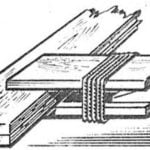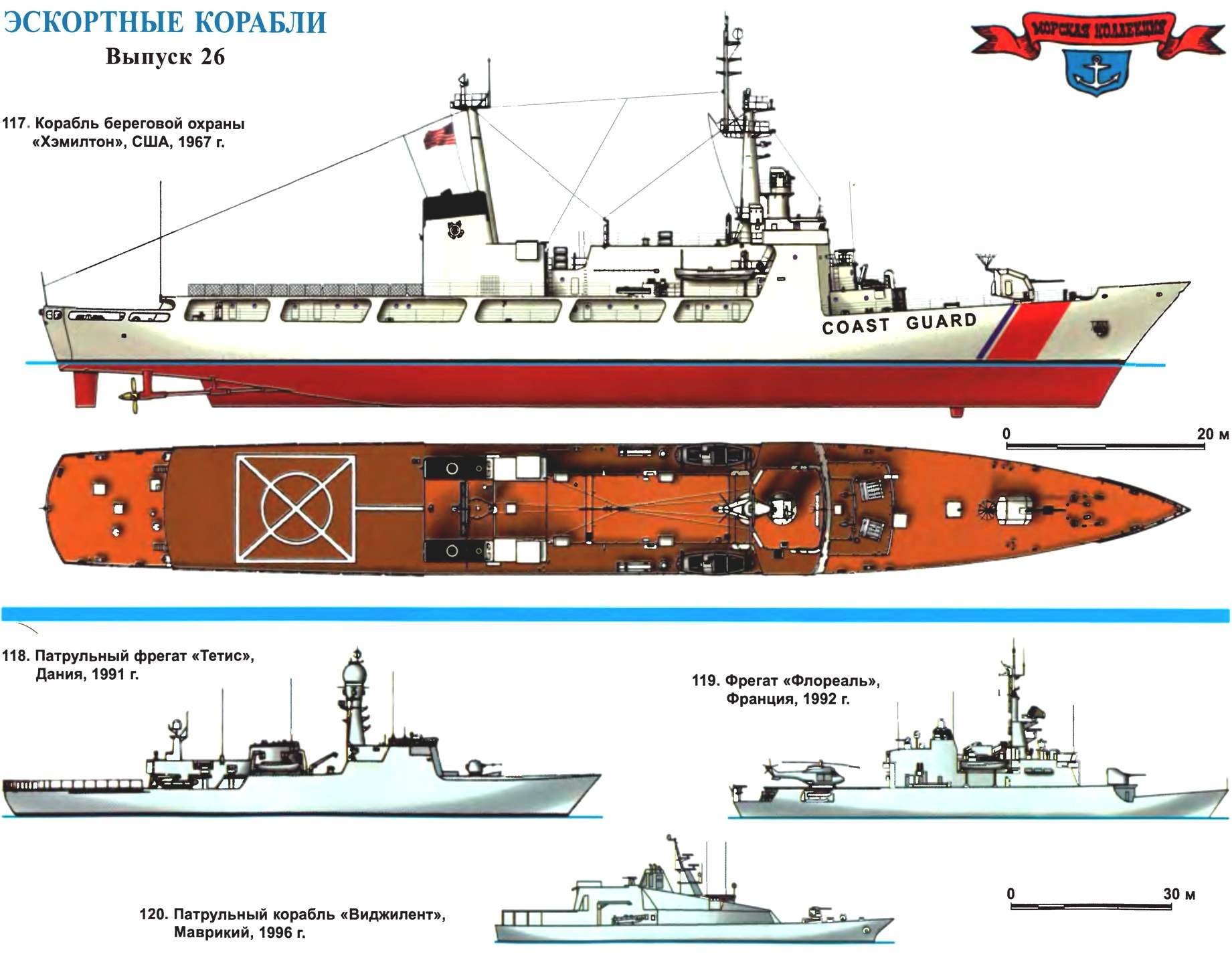 It is well known that warships is not only a means of waging war at sea. And in peacetime the Navy has to solve a wide range of tasks — carry out protection of territorial waters to combat violators of the state border, to carry out diplomatic missions, to “show the flag” and demonstrate the power of his country in “hot spots” of the planet.
It is well known that warships is not only a means of waging war at sea. And in peacetime the Navy has to solve a wide range of tasks — carry out protection of territorial waters to combat violators of the state border, to carry out diplomatic missions, to “show the flag” and demonstrate the power of his country in “hot spots” of the planet.
In the nineteenth century many of the major powers, particularly England and France, a large number of built sail-screw sloops and sailing gunboats specifically for service in their colonies. Later there was a US coast guard ships, the Scandinavian countries — court protection of fisheries… All of these ships, often collectively referred to as the patrol was not created for battle with an equal enemy to actually use their weapons, they rarely ever only against the pirate junks, schooners of the smugglers Yes, the rebellious natives on some tropical island. Therefore, their combat characteristics (weapons, speed, armor) looked very modestly. Much more important for the patrol ships had a cruising range, seaworthiness, good habitat conditions in a hot (or, conversely, Arctic) climate. On the implementation of escort tasks, they had not focused, and so very many ships for the colonial and border service as part of this series of articles was not considered.
However, as soon as the frigates and corvettes to foreign navies were gradually turned from escort units in universal, to distinguish between them and some patrol ships became increasingly difficult. An example: which is an independent structure (i.e., not part of the Navy) USCG (U.S. Coast Guard) in 1967 — 1972, was supplemented by 12 modern patrol vessels of type “Hamilton”. Traditionally, they were classified as “cutters” (boats), but was actually a full-fledged frigates with a full displacement of more than 3000 m of Their combined power-plant, consisting of two 12-cylinder diesel engines and two gas turbines of the company, “Pratt & Whitney”, provided very high speed — 29 knots. Interestingly, “Hamilton” became the first major U.S. warship with gas turbine power; a second destroyer — “Sprues” was put into operation only eight years later.
However, in many other settings, “Hamilton” looked more modern than its closest “relatives” of the U.S. Navy. A good layout made it possible to place on the vehicle a spacious runway for the helicopter, and a hangar to hide between the two posted on the sides of the chimneys. Thanks to the use of aluminum alloys has resulted in a substantial freeboard and good seakeeping. Among the numerous technical innovations, not to mention the unusual equipment of the wheelhouse, in particular, control of the ship was not a traditional steering wheel, and the lever is a joystick. Finally, the sleek silhouette of “Hamilton” in the 60-ies of the last century, it seemed a real breakthrough in naval architecture, anticipating the aesthetics of the ships next — generation missile wagon.
However, the latest technical solutions in the design of a new “cutter” is somewhat contrasted with his very archaic weaponry. In addition to quite modern torpedo tubes, and ASW helicopter, “Hamilton” was fitted with a universal 127 mm cannon prewar sample and a few outdated mortars “Hedgehog”. Only in the course of modernization carried out in 1985 -1993 years, all series vehicles equipped with new fire control systems, radars, electronic warfare, and the old artillery was replaced by 76-mm automatic gun mount “OTO-Melara” and six-barreled 20-mm anti-aircraft artillery complex “Vulcan Phalanx”. In addition, five units armed with anti-ship missiles “Harpoon”. Thus, the frigates have become multi-purpose. The only drawback was that the redesigned telescoping hangar superstructure, and long nose somewhat spoiled the appearance of the ship, making its silhouette is not as harmonious as before.
In connection with the steady rising cost of warships the creation of their simplified analogues for service in time of peace became more and more urgent. Not long ago, abroad, a new class of “patrol ships of the open sea”, or abbreviated as OPV (Offshore Patrol Vessels). As a rule, quite large, the size of a frigate, naval ships, armed with only light artillery, but definitely carrying on Board the helicopter. The speed they have is usually about 20 — 22 knots. Structurally correspond to OPV technology of civil shipbuilding, which allows you to save not only on the “stuffing”, but the “box” of the body.

117. The coast guard ship “Hamilton”, USA, 1967
Built at the shipyard in new Orleans. Full displacement 3050 T. maximum Length 115,2 m, beam of 13.1 m, draft 6.1 m Capacity twin-shaft diesel-gas turbine 43 000 HP speed 29 knots. Armament: one 127-mm gun mount, two 20-mm machine gun, two three-pipe 324-mm torpedo tubes, two mortar “Hedgehog”, one helicopter. Only 1967 — 1972 built 12 units.
118. Patrol frigate “Thetis”, Denmark, 1991
Built at the shipyard in Svendborg. The standard displacement of 2600 t 3500 t full Length the greatest 112,5 m, width of 14,4 m, draught-6 m. Capacity single-shaft diesel installation 10 800 HP., speed 20 knots. Armament: one 76-mm automatic gun mount, two 20-mm machine gun, two release gear, one helicopter. Just 1991 — 1992 built 4 units.
119. The frigate “Prairial”, France, 1992
Built at the shipyard in Saint-Nazaire. The standard displacement of 2600 t, full t 2950 maximum Length of 93.5 m, width 14 m, draft 4.3 m. Capacity twin-shaft diesel installation 8820 HP, speed 20 knots. Armament: two PU RCC “Exocet” MM 38, two SAM “Mistral”, one 100-mm automatic gun mount, two 20-mm machine gun, one helicopter. Only in 1992 — 2001 built 8 units, including two for Morocco.
120. Patrol ship “Vigilante”, Mauritius, 1996.
Built at the shipyard in Talcahuano (Chile). Displacement 1350 tons standard, full 1650 T. maximum Length 75 m, width 14 m, draft 3,9 m. Capacity twin-shaft diesel installation 11 530 HP, speed 22 knots. Armament: one coupled 40-mm automatic gun mount, two machine guns, one helicopter. Only built two units, one in Chile for Mauritius and one in England — for Ireland.
Currently, patrol vessels OPV class there are in the fleets of many countries. Most of them quite ordinary and of no particular interest. But among them there are truly unique specimens. For example, built in 1992 in Japan coast guard vessel “Shikishima” fit to be called almost a cruiser! Still, in the complete displacement of 9350 t it has a speed of 25 knots, and the hangar can fit two heavy helicopter “Super Puma”. Although the regular armament of the ship consists of 35-mm and 20-mm guns, it is reserved for the installation of other weapon systems, including missiles. By the way, “Shikishima” could be considered a full-fledged escort ship, as he is in the service specializiruetsya on convoys of ships carrying radioactive materials and spent fuel at nuclear power plants.
Interest and patrol frigates of the “Thetis”, built in 1991 — 1992 Denmark for its Navy. They were the successors of the courts for the protection of fisheries, the former is very common in the Scandinavian countries for a long time. “Tethys” is different from its predecessors in larger sizes and quite “military” appearance. By displacement it is 2.5 times the Danish multi-purpose frigate “Niels JUEL” (see “modelist-Konstruktor” No. 2, 2005). Although the armament of the “Tethys” is quite modest, a large hangar, modern electronics and a towed hydroacoustic station makes it quite versatile frigate— though inferior to most of his “classmates” at speed.
Even closer to full-fledged combat frigates, French ships of the “Floreal”. They were created specifically to serve in remote “overseas territories”, mainly in the Pacific. It is believed that in areas of low risk where substantial opposition from the enemy is not expected, patrol frigates of the “Floreal” can solve any problem — from attacks on surface facilities and hunting for submarines prior to the implementation of amphibious operations and the evacuation of the civilian population. Hence the very unusual decision in the design of the ship — for example, the neighborhood anti-aircraft and anti-ship missiles with spacious living areas and a hold to transport 100 tons of cargo… Despite the rather powerful for patrol craft weapons, combat information control system “Floreal” has decided not to bet in order to save money. The foreign press reported, the construction of each of the French frigates cost about three times cheaper than full-fledged combat ship of similar displacement. Well, “advanced” frigate “Lafayette” in General has become more expensive once in seven or eight.
Just for the French Navy in 1992 and 1994, six were built frigates of the “Floreal”; later ordering another two ships came from the government of Morocco Last instead of 100 mm guns were armed with 76-mm gun mounts “OTO-Melara”.
Among the patrol boats of smaller size is impossible to ignore the unusual design “Vigilante”, sailing under the flag of the small island nation of Mauritius. This is a truly international project, the drawings were developed in Canada, and the construction was carried out in Chile — thus, the designer, the Builder and the customer were on three different continents! Features of the ship’s steel superstructure, performed under the influence of the concept of “stealth”, and a very small ratio of length to width (a little more than 5:1). The latter allowed for a relatively small displacement to be placed on Board a light helicopter. In addition to patrol, “Vigilante” can be used in the role of the ocean lifeguard for this purpose, it is equipped with a towing device and a powerful means of fire. The ship entered service in 1996. Later on his project in England built the same ship “Le Roisin” for the coast guard of Ireland, but instead of landing site it was equipped with a superstructure with additional crew accommodation.
Well, in conclusion, a little personal experience. The author of these lines happened to be on Board the two patrol frigates, which were discussed above, the Danish “Huijbergen” (“Tethys”) and French “Thermidor” (“Floreal”). The first thing that immediately catches the eye of their visit, wide hallways, spacious Lounges and comfortable cabins, equipped with individual air conditioning. Among the crew a lot of women. The behavior of the sailors and their leisurely “impressively” is not felt cultivated in our fleet military bearing, although cleanliness and order in the inner rooms almost perfect. One might feel like you’re not on a warship, and on a cruise ship…
However, in the West it is no surprise. There have long been convinced that for ocean patrol in peacetime advantageous to have comfortable and cheap to operate “semi-military” ships, to use for the same purpose with a cargo of arms and electronics expensive frigates or destroyers. For substantial savings, you can accept the fact that in the case of a global nuclear war, the value of these ships will be close to zero.
S. BALAKIN
Recommend to read
 SOLDERING WILL BE MORE CONVENIENT
SOLDERING WILL BE MORE CONVENIENT
Metal "crocodile" attached to the soldering iron stand, will simplify the work when joining the two parts: it is held one part, and the second is a tweezer, and you can safely solder. CLAMP “THREE WOOD”
CLAMP “THREE WOOD”
When gluing different items instead of the clamp you can use a clamp consisting of two strips, wire and click. The arrangement of such clamps can be seen from Fig. S. FEDORENKO, g....
 It is well known that warships is not only a means of waging war at sea. And in peacetime the Navy has to solve a wide range of tasks — carry out protection of territorial waters to combat violators of the state border, to carry out diplomatic missions, to “show the flag” and demonstrate the power of his country in “hot spots” of the planet.
It is well known that warships is not only a means of waging war at sea. And in peacetime the Navy has to solve a wide range of tasks — carry out protection of territorial waters to combat violators of the state border, to carry out diplomatic missions, to “show the flag” and demonstrate the power of his country in “hot spots” of the planet.



